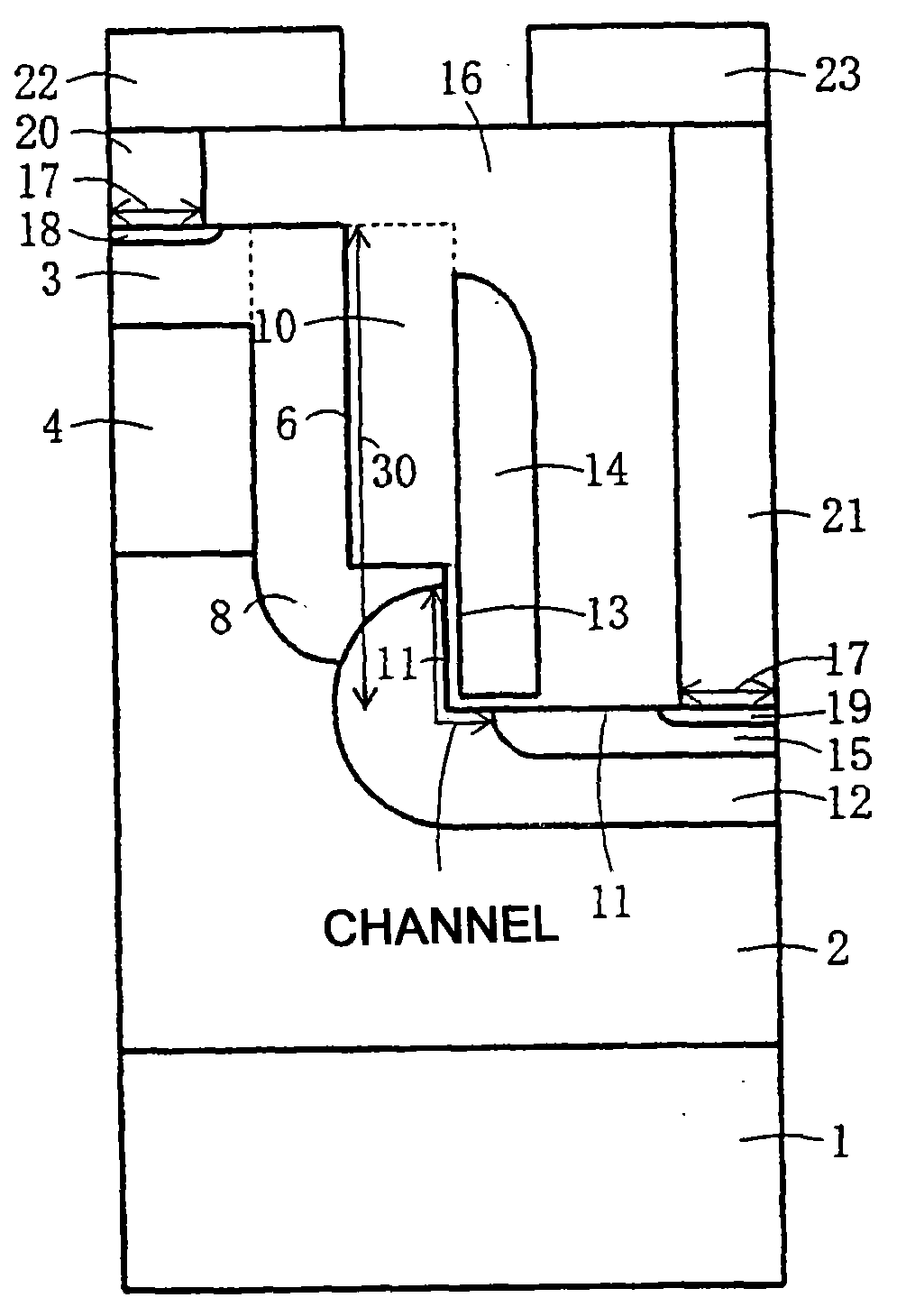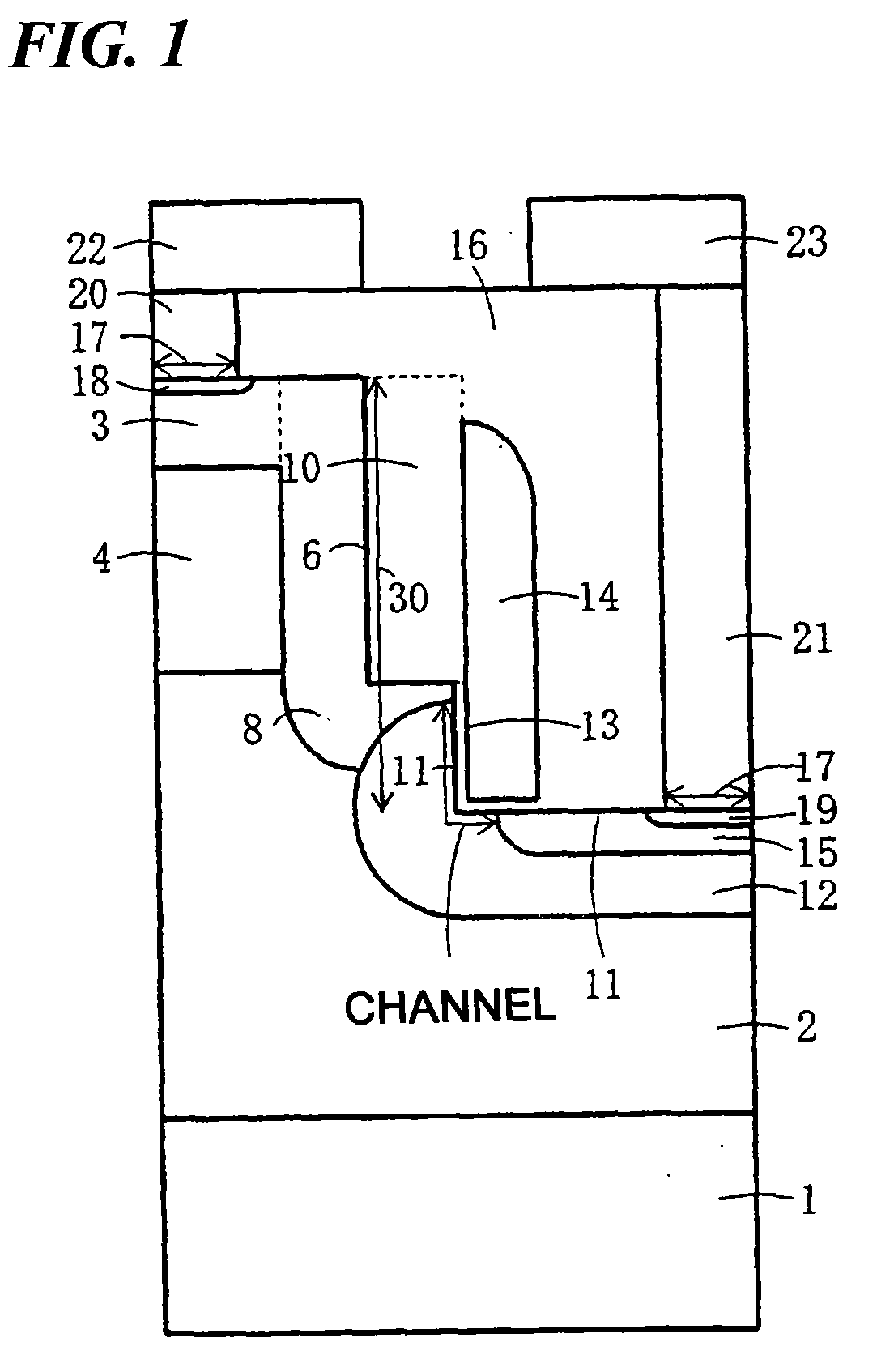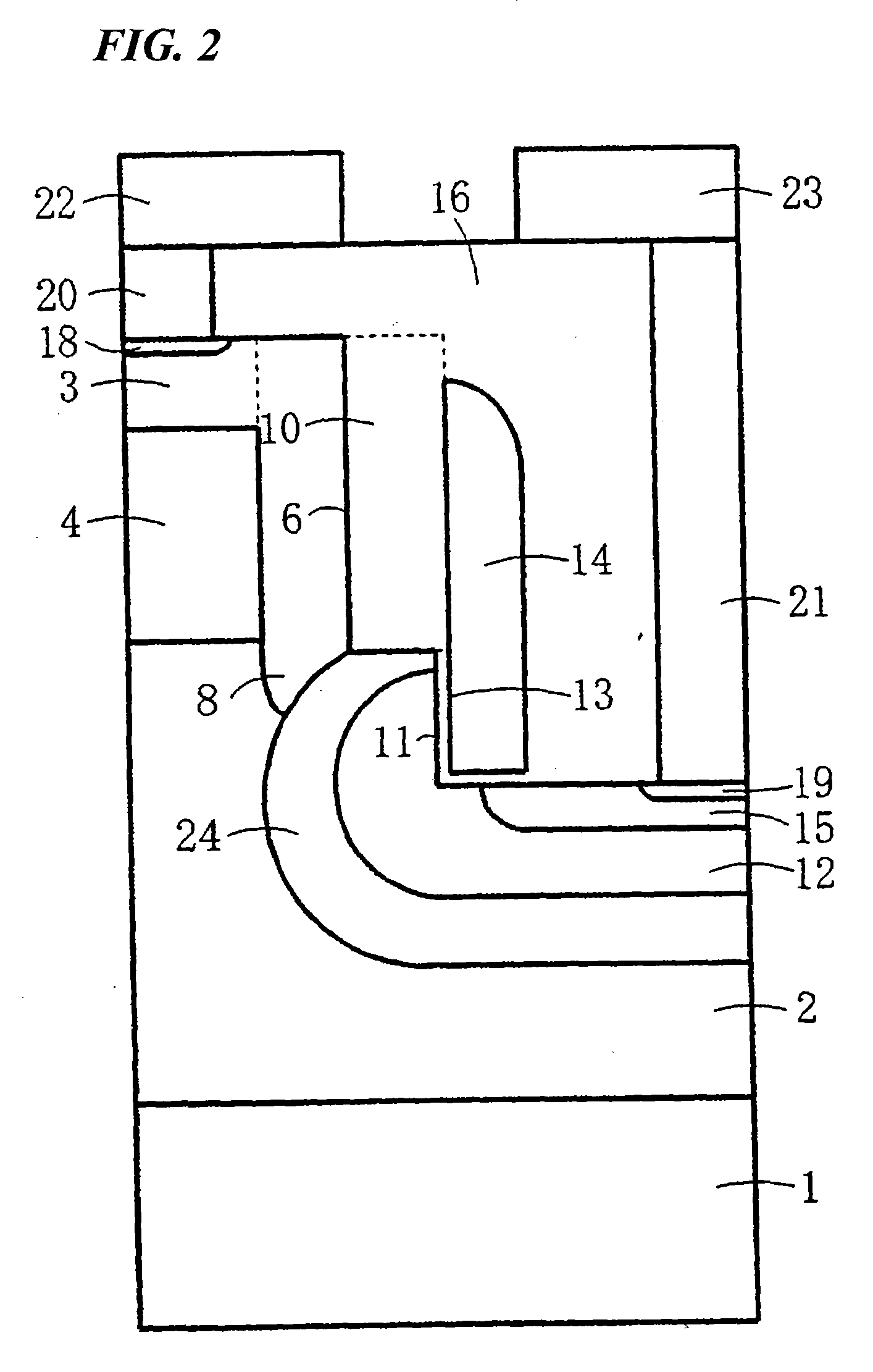Semiconductor device and the method of manufacturing the same
a technology of semiconductor devices and mosfets, which is applied in the direction of semiconductor devices, basic electric elements, electrical equipment, etc., can solve the problems of high breakdown voltage of power mosfets, and achieve the reduction of on-state resistance, high breakdown voltage, and high breakdown voltage
- Summary
- Abstract
- Description
- Claims
- Application Information
AI Technical Summary
Benefits of technology
Problems solved by technology
Method used
Image
Examples
second embodiment
[0041]FIG. 2 is a cross sectional view of a semiconductor device according to the invention. The semiconductor device shown in FIG. 2 is different from the semiconductor device shown in FIG. 1 in the following point. In FIG. 2, n-type body region 24 is formed in the bottom portion of first trench 6 such that n-type body region 24 is surrounding p-type base region 12. The impurity concentration in n-type body region 24 is set to be higher than the impurity concentration in n-type well region 2. This impurity concentration distribution is employed to prevent foreseeable punch-through that may be caused between p-type RESURF region 4 and p-type base region 12 in the structure shown in FIG. 1 from occurring. It is possible for forming an n-type body region (n-type buffer region) in the trench bottom to raise the punch-through breakdown voltage.
third embodiment
[0042]FIG. 3 is a cross sectional view of a semiconductor device according to the invention. The semiconductor device shown in FIG. 3 is different from the semiconductor device shown in FIG. 2 in the following points. First, second trench 11 is not formed in FIG. 3 and the bottom of first trench 6 is positioned as deeply as the bottom of second trench 11 in FIG. 2. Second, gate insulator film 13 is formed between second drain region 8 and gate electrode 14 but thick oxide film 10 is not in FIG. 3. This structure facilitates improving the tradeoff relation between the breakdown voltage and the ON-state resistance. In FIG. 3, n-type body region 24 may not be formed with no problem in the same manner as in FIG. 1.
fourth embodiment
[0043]FIG. 4 is a cross sectional view of a semiconductor device according to the invention. The semiconductor device shown in FIG. 4 is different from the semiconductor device shown in FIG. 1 in the following point. In FIG. 4, first n-type drain region 3 is formed more deeply than in FIG. 1 and p-type RESURF region 4 is formed in first n-type drain region 3. In this structure, the impurity concentration in the portion of first n-type drain region 3 under p-type RESURF region 4, namely the portion of first n-type drain region 3 located between the p-type RESURF region 4 and the n-type well region 2, is close to the impurity concentration in n-type well region 2. Therefore, the semiconductor device shown in FIG. 4 exhibits the effects similar to the effects that the semiconductor device shown in FIG. 1 exhibits.
[0044]In the semiconductor devices according to the second and third embodiments, p-type RESURF region 4 may be formed in first n-type drain region 3 with no problem. The modi...
PUM
 Login to View More
Login to View More Abstract
Description
Claims
Application Information
 Login to View More
Login to View More - R&D
- Intellectual Property
- Life Sciences
- Materials
- Tech Scout
- Unparalleled Data Quality
- Higher Quality Content
- 60% Fewer Hallucinations
Browse by: Latest US Patents, China's latest patents, Technical Efficacy Thesaurus, Application Domain, Technology Topic, Popular Technical Reports.
© 2025 PatSnap. All rights reserved.Legal|Privacy policy|Modern Slavery Act Transparency Statement|Sitemap|About US| Contact US: help@patsnap.com



